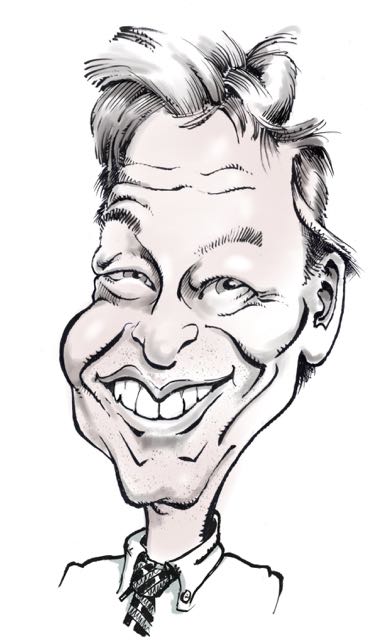“A Free AND Ordered Space” …Will be Found in a Prayer at the 50-Yard Line

Part 10 of the series
By John M. Sedor, Member, Sedor, Wendlandt, Evans & Filippi, LLC
Our theme this past year has been “A Free AND Ordered Space.” Its simplicity is deceptive. Freedom is the antithesis of order and Order abhors freedom. Nevertheless, the founders of our Nation embedded these two principles in our democratic system. The result? Almost 250 years of systemic tension that can be found in all three branches of government but is most easily seen in the courts. Judges from the Federal District Courts to the Supreme Court must carefully establish the competing tension between freedom and order in the cases that come before them to allow our system to continue to flourish. It is not an easy task and it is, by design, never ending.
Indeed, as we wind down for the summer and conclude this theme, it – the tension between freedom and order – continues to unfold in the news as Supreme Court cases, like so many things nowadays, become lightning rods for segments of society. Peel away the particular facts of the case-of-the-day, and inevitably, the one side wants more freedom and less order while the other side wants the opposite. That this exists in our system is intentional. For instance, we have competing constitutional rights to express our religious beliefs without governmental interference (the Free Exercise Clause) and are assured (via the Establishment Clause) that the government will not seek to force religion on us. The tension between these two rights has existed since the day the Bill of Rights was adopted. And because “facts are stubborn things,” this tension must be established within the context of the particular facts of the case.
To illustrate the point: Joe Kennedy was a football coach in Bremerton, Washington. Not anymore. Why not? He claims he was fired for going to the middle of the field after football games and praying. He claims that the school district abridged his freedom of speech and his right to freely exercise his religion. The 9th Circuit (which includes Alaska) held in favor of the Bremerton School District concluding not only that the school district could restrict his expression (prayer) because the prayer was done while he was a government official (a public-school coach) but, in addition, the District would be in violation of the Establishment Clause if it did not stop the post-game prayers. When a judge on the 9th Circuit sought to have the case heard by the whole 9th Circuit (called a rehearing en banc), the request was denied but the decision was notable because there were an astonishing number of dissents (9).
The Supreme Court took the case and less than a month ago, Coach Kennedy and the Bremerton School District spent almost two hours in front of our highest court urging their respective positions and answering questions from the Justices. A decision is expected before August. The decision will, as has happened so often since 1776, set or reset the tension between these intentionally competing principles.
In concluding our Free And Ordered Space theme, however, there is more to the story. The 9th Circuit had substantial internal disagreement as can be seen by the fractured vote on the request for rehearing en banc. Coach Kennedy and Bremerton School District disagree with each other vehemently. At the Supreme Court oral argument, the justices appeared to strongly disagree about the facts of the case and how the case should be decided. And yet these participants in this experiment of representative democracy exchange their ideas and values in a civil manner – in a Civil Discourse.
As I think through the meaning of A Free And Ordered Space, it underscores that the only way to have a functioning society that has intentionally embedded competing principles is to resolve the continuous disputes through Civil Discourse. Divisive approaches that draw bright lines and encourage people to not listen to different perspectives undermine the manner in which societal frictions have been resolved for most of our history. These divisive approaches seem all the more frequent nowadays. That is why in the two Law & Policy Days that AASB sponsored this year, there was a focus on how different views and perspectives can be shared and debated.
Civil Discourse was not (and could not) be enshrined in the Constitution but there is no doubt that it was a fundamental trait or skill that our founders had and, I suspect, understood would be necessary for the success of our country’s democratic system. Is it easy? No. Simple? Not a chance. Our society built on tension and a critical need to civilly discourse is imperfect at best. But to paraphrase Sir Winston Churchill, this Free and Ordered Space that we have is the worst form of government … except for all the other forms that have been tried.
May you have a wonderful summer!
More from Sedor, Wendlandt, Evans & Filippi, LLC:
- Current series: A Free AND Ordered Space
- Nine-part Series: Ripp’d from the Headlines
- Seven-part series: Technology and the law
- Eight-part series: Interacting with the world outside of the school
- Five-part series: Union Issues in Schools
- Four-part series: Freedom of Expression in Schools
he views expressed here are the writer’s and are not necessarily endorsed by the Association of Alaska School Boards. AASB welcomes diverse perspectives and civil discourse. To submit a Guest Column for consideration, see our Guest Column Guidelines and email your 400-1000 word submission HERE.
